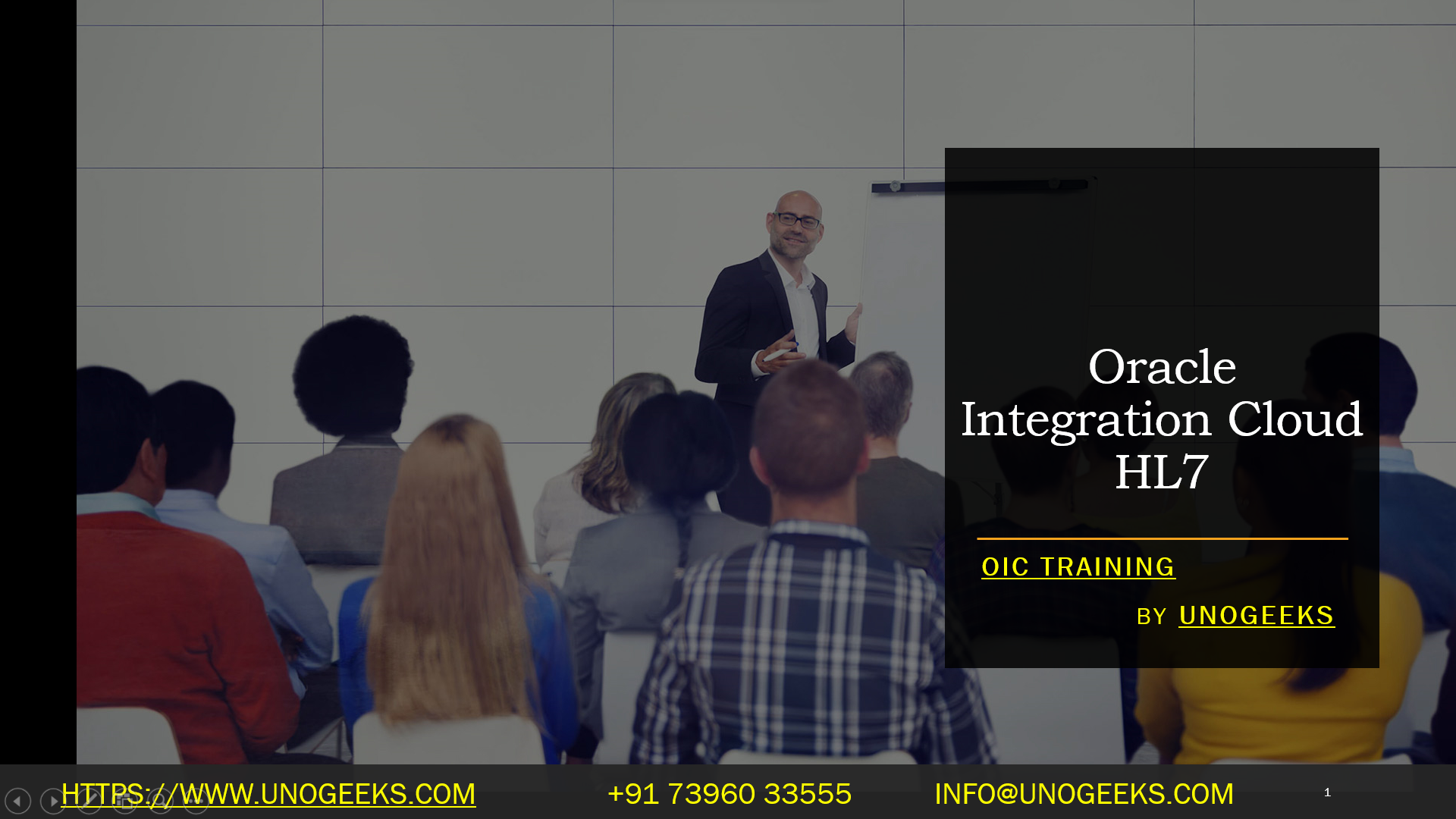Oracle Integration Cloud HL7
Oracle Integration Cloud (OIC) is a suite of services aimed at integrating applications within the cloud and on-premises. It’s designed to allow seamless communication between disparate systems, and that includes the capability to work with healthcare protocols like Health Level Seven (HL7).
HL7 is a set of international standards for transferring clinical and administrative data between software applications used by healthcare providers. In the context of integrating with Oracle, HL7 would be used to ensure that patient information, healthcare schedules, billing information, etc., are moved correctly between different systems.
Here’s how you might approach integrating HL7 with Oracle Integration Cloud:
Understand the Requirements: Ensure you understand what data needs to be moved, where it’s coming from, and where it needs to go. This will dictate the configuration and mapping that needs to be done within Oracle.
Use Oracle’s Pre-Built Integrations if Available: Depending on the version of Oracle Integration Cloud, there may be pre-built connectors or integration packages designed to work with HL7. Utilize these to speed up the process if they fit your needs.
Custom Integration: If a pre-built solution doesn’t exist or doesn’t meet your requirements, you’ll need to design a custom integration. This will likely require:
- Mapping the HL7 data to the corresponding fields within the Oracle database or application.
- Developing custom adapters to translate between HL7 and Oracle’s data formats if necessary.
- Ensuring that data is transferred securely and that all regulatory requirements are met, particularly in relation to patient privacy and healthcare regulations like HIPAA.
Testing: Thoroughly test the integration in a controlled environment before deploying it to production. This includes testing the data transformation, transfer, error handling, and ensuring all compliance requirements are met.
Monitoring and Management: Once in production, the integration should be monitored to ensure that it’s functioning correctly. This includes setting up alerts for any issues and regularly reviewing the system to ensure that it continues to meet the needs of the organization.
Documentation: Document the integration fully, including its configuration, how it works, and any custom code or mapping. This ensures that others in the organization can understand and maintain the integration going forward.
Work with Experts if Necessary: Depending on the complexity of the integration and the critical nature of healthcare data, it may be prudent to work with Oracle or third-party experts who specialize in HL7 integration.
Oracle Integration Cloud (OIC) Training Demo Day 1
Conclusion:
Unogeeks is the No.1 Training Institute for OIC. Anyone Disagree? Please drop in a comment
Please check our Oracle Integration Cloud Training Details here OIC Training
You can check out our other latest blogs on Oracle Integration Cloud in this OIC Blogs

———————————-
For Training inquiries:
Call/Whatsapp: +91 73960 33555
Mail us at: info@unogeeks.com
Our Website ➜ https://unogeeks.com
Follow us:
Instagram: https://www.instagram.com/unogeeks
Facebook: https://www.facebook.com/UnogeeksSoftwareTrainingInstitute
Twitter: https://twitter.com/unogeeks
